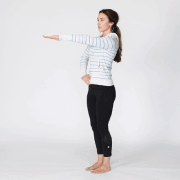Shoulder pain can be a significant hindrance to your daily activities and overall well-being. It can be caused by an injury, overuse, or some underlying medical condition, finding the right treatment is essential for alleviating discomfort and regaining your mobility. In this blog, we are going to explore the various aspects of shoulder pain, its causes, and effective treatment options to help you on your journey toward relief.
Contents
Exploring The Causes Of Shoulder Pain
Understanding the root causes of shoulder pain is very important for effective treatment and management. Here are some common factors that can add to shoulder discomfort:
Rotator Cuff Injuries: The rotator cuff is a group of muscles and tendons that stabilize the shoulder joint. Overuse, repetitive movements, or sudden trauma to the shoulder can lead to strains, tears, or inflammation in the rotator cuff, thus, causing pain and a limited range of motion.
Tendinitis: Tendinitis occurs when the tendons that connect muscles to bones become inflamed because of overuse. It often affects the tendons around the shoulder joint and can result in pain during movement.
Bursitis: Bursitis basically involves inflammation of the bursae, which are small fluid-filled sacs that cushion the shoulder joint. Overuse, trauma, or certain medical conditions can lead to bursitis and cause pain, tenderness, and swelling.
Frozen Shoulder: Frozen shoulder is characterized by stiffness and reduced mobility in the shoulder joint. The exact cause is often unknown, but it can result from prolonged immobility or underlying medical conditions.
Osteoarthritis: Over time, the cartilage that cushions the shoulder joint can deteriorate, leading to osteoarthritis. This condition causes pain, stiffness, and reduced range of motion in the affected joint.
Rheumatoid Arthritis: An autoimmune disorder, rheumatoid arthritis can affect multiple joints, including the shoulder. It causes inflammation, pain, and joint deformity.
Fractures and Dislocations: Trauma, falls, or accidents can result in shoulder fractures or dislocations, leading to intense pain and the need for immediate medical attention.
Nerve Compression: Nerves around the shoulder can become compressed or pinched due to conditions like thoracic outlet syndrome or nerve impingement, causing radiating pain and discomfort.
Heart Conditions: In some cases, heart-related conditions such as angina or heart attack can cause referred pain to the left shoulder.
Treatment Of Shoulder Pain At Home
Here are some effective at-home strategies to help alleviate mild to moderate shoulder discomfort:
Rest and Immobilization: Give your shoulder a break from activities that exacerbate pain. Avoid lifting heavy objects or engaging in strenuous exercises that strain the shoulder muscles.
Cold Compress: Applying a cold compress or ice pack to the affected area can help reduce inflammation and numb the pain. Wrap the ice pack in a cloth and apply it for 15-20 minutes at a time, several times a day.
Heat Therapy: Applying heat to the shoulder can help relax muscles and increase blood flow. You can use a warm compress, or heating pad, or take a warm shower in order to ease tension.
Over-the-Counter Pain Relievers: Non-prescription pain relievers such as Advil or Aspirin can provide temporary relief from pain and inflammation.
Gentle Stretches: Incorporate gentle shoulder stretches into your routine to improve flexibility and reduce muscle tension. Shoulder rolls, cross-body arm stretches, and overhead reaches can be beneficial.
Self-Massage: Use your opposite hand to massage the sore areas of your shoulder. Apply light pressure and circular motions to help relax tight muscles.
Posture Awareness: Maintain good posture to prevent unnecessary strain on the shoulder. Avoid hunching over and make an effort to sit and stand tall.
Ergonomic Adjustments: If working from home or using electronic devices, ensure your workspace is ergonomically designed. Adjust your chair, keyboard, and monitor to be able to support good posture.
Exercises For Shoulder Pain
Perform these exercises under the guidance of a healthcare professional, especially if you have an existing shoulder condition. Here are some exercises that may help alleviate shoulder pain:
Pendulum Swings
- Stand with your unaffected hand resting on a surface for support.
- Let your affected arm hang straight down and gently swing it in small circles, both clockwise and counterclockwise.
- Perform 10-15 swings in each direction, gradually increasing the size of the circles.
Shoulder Blade Squeezes
- Sit or stand with your arms at your sides.
- Squeeze your shoulder blades together and hold for 5-10 seconds.
- Release and repeat for 10-15 repetitions.
Cross-Body Arm Stretch
- Gently pull your affected arm across your chest using your opposite hand.
- Hold the stretch at the point of mild discomfort.
- Hold for 20-30 seconds on each side.
Wall Angels
- Stand with your back against a wall and your feet slightly away from the wall.
- Raise your arms overhead, keeping your wrists and elbows against the wall.
- Slide your arms up and down the wall while maintaining contact with the wall. Perform 10-15 reps.
Doorway Stretch
- Stand in a doorway with your arms bent at a 90-degree angle and your forearms resting against the doorframe.
- Gently lean forward, feeling a stretch across your chest and the front of your shoulders.
- Hold the stretch for 20-30 seconds, repeating 3 times.
External Rotation with Band
- Attach a resistance band to a doorknob or another stable object at waist height.
- Hold the other end of the band in your affected hand with your elbow bent at a 90-degree angle and your forearm parallel to the ground.
- Rotate your forearm outward, keeping your upper arm still. Slowly return to the starting position.
- Perform 10-15 repetitions for each arm.
Isometric Shoulder Holds
- Sit or stand with your arms at your sides and your palms facing outward.
- Press your palms against a wall or door frame and hold the contraction for 10 seconds.
- Release and rest for a few seconds before repeating 5 times.
Shoulder Flexor Stretch
- Gently grasp your affected arm just above the elbow with your opposite hand.
- Gently pull your arm across your body, feeling a stretch in your shoulder.
- Hold for 20-30 seconds on each side, repeating 3 times.
Effective Treatments For Shoulder Pain
Before starting any treatment plan on your own, it’s crucial to consult a healthcare professional. They can diagnose the underlying cause of your shoulder pain and recommend the most suitable treatments for your specific condition.
- Physical Therapy: A tailored physical therapy program can strengthen the muscles around the shoulder joint, improve flexibility, and correct posture. Therapists use techniques such as manual therapy, exercises, and stretches to enhance healing.
- Medications: Nonsteroidal anti-inflammatory drugs (NSAIDs) can help reduce pain and inflammation. In some cases, prescription medications or injections may also be recommended for more severe pain.
- Corticosteroid Injections: Injections of corticosteroids administered directly into the shoulder joint can provide targeted pain relief and reduce inflammation.
- Platelet-Rich Plasma (PRP) Therapy: PRP injections use your body’s own platelets to stimulate healing in damaged tissues.
- Manual Manipulation: Chiropractic adjustments or osteopathic manipulative treatment can improve joint mobility and alleviate pain.
- Surgical Intervention: In cases of severe injuries or conditions that don’t respond to conservative treatments, surgery may be recommended. Procedures range from minimally invasive arthroscopy to more complex surgeries for joint replacement or repairs.
- Lifestyle Changes: – Maintaining proper posture, avoiding prolonged overhead activities, and using ergonomic equipment can prevent strain on the shoulder.
- Home Care: – Following a prescribed home exercise program, practicing proper self-care, and maintaining a healthy lifestyle can contribute to healing.
Conclusion
Shoulder pain can disrupt not only your physical well-being but also your daily life and emotional equilibrium. The effective treatment for shoulder pain is more than just alleviating discomfort; it’s about reclaiming your freedom to move, engage, and enjoy life without limitations.
As you explore the realms of physical therapy, medications, exercises, and lifestyle adjustments, remember that your journey is unique. What works for one person might differ for another.
If you’re experiencing Shoulder pain, physical therapy for shoulder pain at PhysioMantra can help: Book an online physical therapy session.










